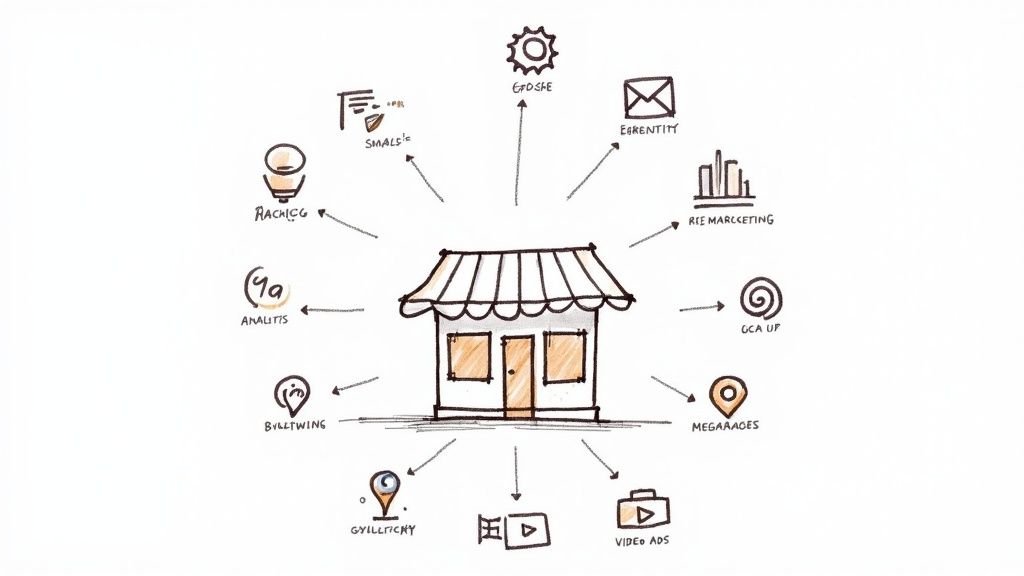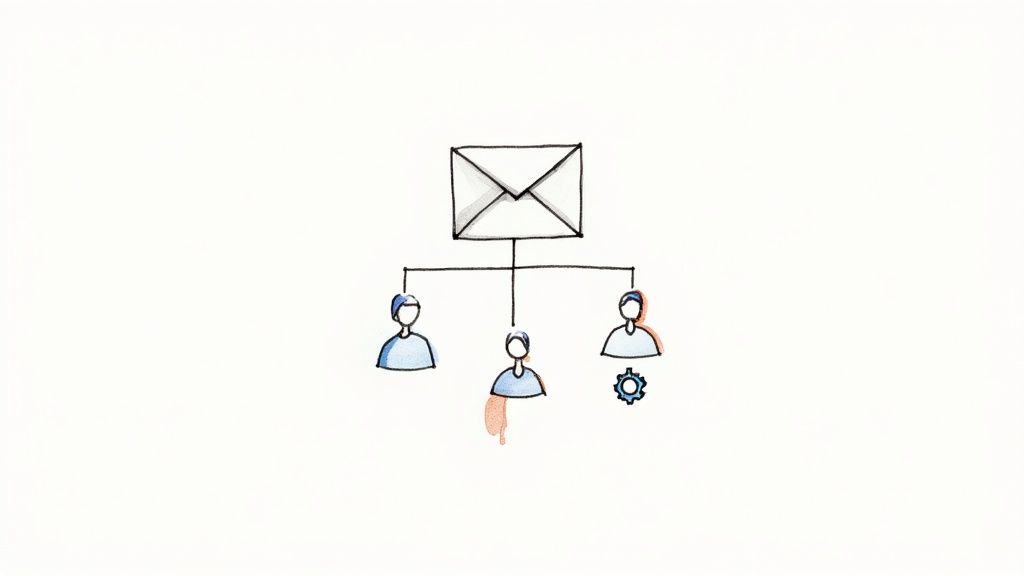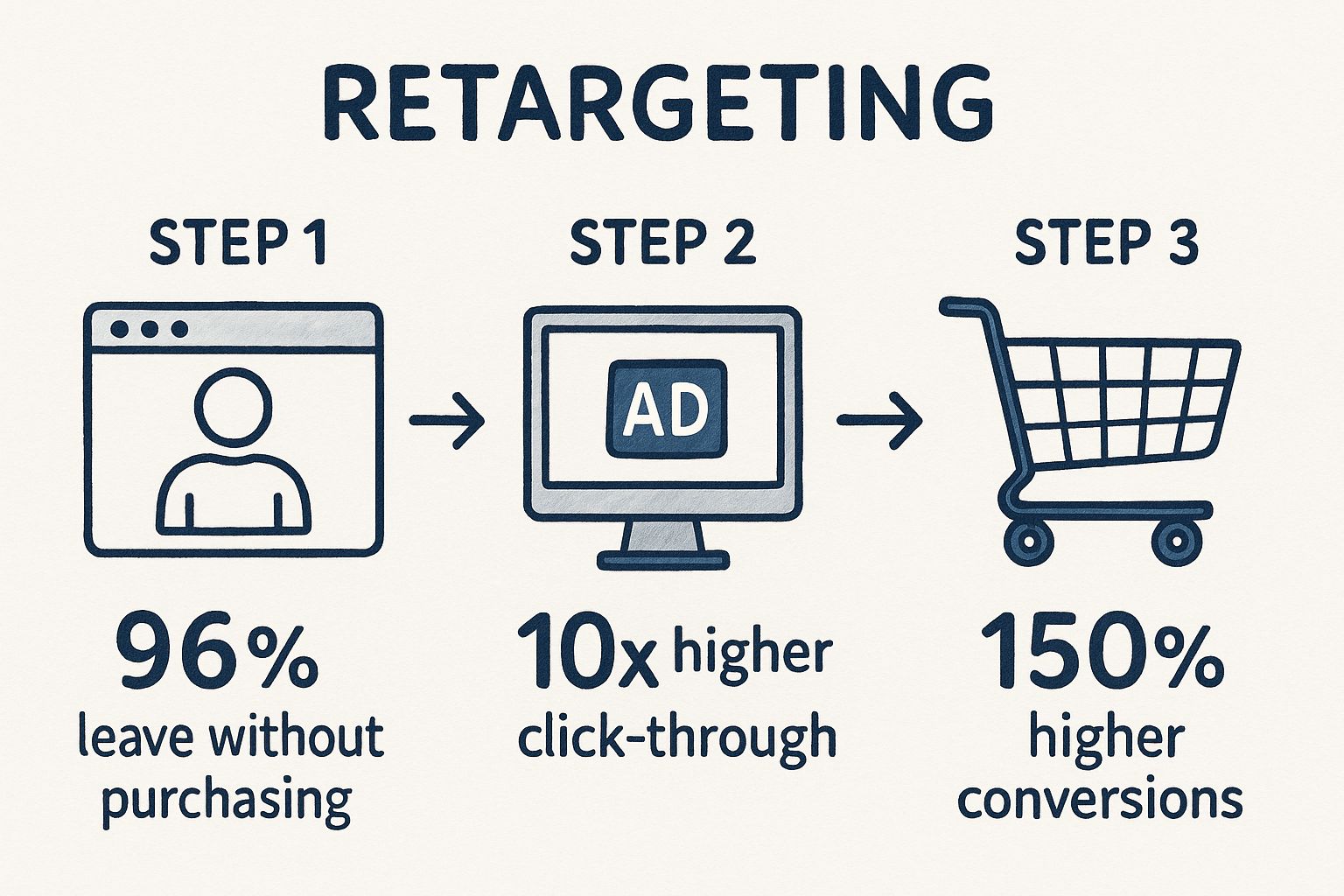
Navigating the Differences: A Clear Guide to Second Party vs Third Party Relationships
Understand the key differences between second party vs third party data. Learn how to leverage each for better marketing strategies and audience insights.

In a crowded market, generic advertising is a fast track to an empty wallet. Small businesses need strategies that are not only powerful but also practical and cost-effective. The key isn't just spending money, it's about investing it wisely into channels that deliver measurable returns. Many business owners struggle, unsure whether to focus on social media, local SEO, or email marketing. This guide cuts through the noise.
We've compiled eight proven, data-driven small business advertising tips that move beyond the obvious. Each one is designed to be implemented immediately, helping you attract more customers, build lasting loyalty, and achieve sustainable growth without a blockbuster budget. You'll learn how to optimize your Google Business Profile for local traffic, segment your email lists for higher engagement, and partner with micro-influencers who genuinely connect with your audience. We will also cover actionable strategies for content marketing, social media targeting, and customer referral programs that turn your existing clients into your best advocates. It’s time to make every advertising dollar count.
Social media marketing is a fundamental channel for modern advertising. It involves creating and sharing content on platforms like Instagram, Facebook, and TikTok to connect with your audience, build your brand, and drive sales. For small businesses, its power lies in the ability to reach specific customer segments with precision, often with a much smaller budget than traditional advertising methods.

This approach works because it allows you to meet customers where they already spend their time. A local coffee shop can use Instagram Stories to post its daily specials, creating a sense of urgency. Similarly, the beauty brand Glossier built its valuation by mastering Instagram, turning customer photos into powerful marketing assets.
To make this one of your most effective small business advertising tips, start small and be strategic. For a deeper dive, exploring comprehensive social media marketing strategies for small businesses can be highly beneficial.
Google Business Profile (formerly Google My Business) is one of the most powerful free tools for small businesses. It lets you manage how your business appears on Google Search and Maps. Combined with local search engine optimization (SEO), it ensures you show up when local customers are actively looking for your products or services, capturing high-intent traffic without a hefty ad spend.
This approach works because it targets customers in your immediate vicinity with a strong need. A plumber whose GMB profile appears in the top "Local Pack" results for an "emergency plumber near me" search is likely to get the call. Businesses with photos receive 42% more requests for directions, showing that a complete profile can dramatically increase foot traffic.
To turn your Google Business Profile into a customer-generating machine, focus on providing complete and current information. For more guidance, explore these detailed small business marketing strategies.
Email marketing is sending targeted messages to subscribers' inboxes to build relationships and drive revenue. For small businesses, its strength comes from segmentation (dividing your audience into smaller groups) and automation (sending emails based on user actions). This combination delivers highly personalized content that converts, offering a high return on investment.

This strategy works because it nurtures a direct line of communication with people who have already expressed interest. For instance, an e-commerce store can automatically send a reminder to customers who left items in their cart, recovering 10-15% of otherwise lost sales. Service-based businesses can use automated campaigns to educate new leads, building trust before a sales pitch.
To turn this into one of your most profitable small business advertising tips, focus on personalization and value.
Content marketing is a long-term strategy centered on creating and distributing valuable, relevant content to attract an audience. Unlike paid ads that stop working when you stop paying, this approach builds a sustainable asset. For small businesses, blogging optimized with SEO best practices drives organic traffic from search engines, establishes you as an expert, and generates leads without ongoing ad costs.
This method works because it directly answers the questions your potential customers are typing into Google. River Pools and Spas increased their website traffic tenfold by creating blog posts that answered common questions about fiberglass pools. By providing solutions for free, they built trust and captured leads at the exact moment customers were researching.
To turn content into an effective advertising tip, focus on solving problems, not just selling products. Understanding the future of content management systems can provide a competitive edge.
Influencer marketing involves collaborating with individuals who have an engaged audience to promote your brand. For small businesses, the sweet spot is with micro-influencers (10,000-100,000 followers) and nano-influencers (under 10,000). These partnerships provide authentic endorsements to niche audiences, often at a fraction of the cost of celebrity campaigns.

This strategy works by leveraging the trust an influencer has built. When a local food blogger raves about a new cafe, their followers are more likely to visit than if they saw an ad. Brands like Daniel Wellington and Gymshark scaled to billion-dollar valuations by building growth on micro-influencer partnerships, proving this is a powerful tip for generating brand awareness and sales.
Start by identifying influencers whose audience and values align with your brand. For those interested in new possibilities, you can explore the creation of AI influencers.
Retargeting is the practice of serving ads to people who have already visited your website but left without converting. Since 96% of visitors aren't ready to buy on their first visit, retargeting acts as a powerful reminder. By placing a small piece of code (a pixel) on your website, you can reconnect with potential customers across the internet, guiding them back to your products.
This approach is effective because it focuses your ad spend on a warm audience that has already shown interest. An e-commerce store can use retargeting to show a specific ad for shoes to someone who added them to their cart but didn't complete the purchase. This precision leads to higher engagement and conversion rates than advertising to a cold audience.
The following infographic illustrates the impact of a typical retargeting flow.

This process highlights how retargeting recaptures lost visitors and turns initial interest into tangible sales.
To get started with retargeting, focus on audience segments with high purchase intent. You can learn how it fits into a broader strategy by understanding what is performance marketing.
Strategic networking is about building genuine, reciprocal relationships within your community. It involves participating in local events, joining industry associations, and engaging with potential customers and partners. For many small businesses, this method builds deep trust and generates high-quality referrals that digital ads often can't match.
This tactic works because people do business with those they know, like, and trust. An insurance agent who is an active member of a local BNI (Business Network International) group can build a client base from trusted referrals. A local contractor who sponsors a youth sports team demonstrates community commitment, which builds goodwill and drives word-of-mouth marketing.
To turn networking into a powerful advertising tip, focus on quality over quantity and adopt a value-first mindset.
Referral programs turn your happiest customers into your most effective sales team. This strategy incentivizes existing customers to recommend your business to their network by offering rewards or discounts. Since word-of-mouth is one of the most trusted forms of advertising, a referral program creates a reliable customer acquisition channel.
This approach is highly effective because it leverages trust. A recommendation from a friend carries more weight than a traditional ad. Dropbox grew its user base by 3900% by offering free storage to both the referrer and the new user. A salon offering a "$25 off for you, $25 off for your friend" incentive can generate many new clients through this simple system.
To make referral marketing a valuable advertising tip, focus on simplicity and value. Make sharing your business an effortless and rewarding experience.
Navigating small business advertising can feel overwhelming. We've explored powerful strategies, from optimizing your Google Business Profile to building a loyal community through email marketing and referrals. The common thread is a focus on precision, personalization, and persistence.
Effective advertising isn't about casting the widest net; it's about casting the right net. Whether leveraging micro-influencers or recapturing leads with retargeting, the goal is the same: connect with your ideal customer meaningfully. Each of the small business advertising tips shared here offers a lever you can pull to generate momentum.
Instead of trying to implement all eight strategies at once, choose one or two that align with your immediate goals.
Successful advertising is a marathon, not a sprint. The key to growth lies in a cycle of implementation, measurement, and adaptation. Launch your campaign, track key performance indicators (KPIs), and adjust your approach based on data. An ad that doesn't perform well isn't a failure; it's a valuable learning opportunity.
By committing to a strategic process, you transform advertising from an expense into an investment. Mastering these small business advertising tips gives you the control to build a predictable engine for growth.
Ready to skip the trial-and-error and see a guaranteed return on your advertising spend? BrandBooster.ai uses proprietary data and advanced AI to create and manage campaigns that deliver measurable results in just 60 days. Discover how our results-guaranteed approach can amplify your growth at BrandBooster.ai.